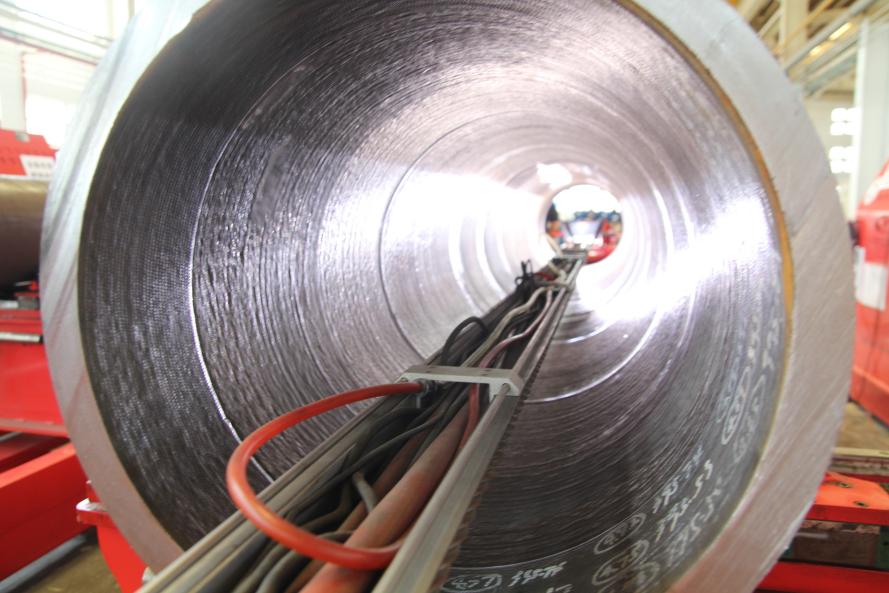Why Cladding Layers Fail to Bond Properly or Peel Off — Causes and Solutions
In modern industrial repair and surface enhancement, cladding plays a crucial role in restoring worn or damaged parts. However, when the cladding layer fails to bond properly with the base metal, or the surface begins to peel, it can severely impact equipment performance and service life.
At FNS Pipeline Technology Co., Ltd., we focus on the science behind these failures – and how to prevent them through optimized welding materials, process control, and stress management.

FNS Pipeline stainless steel clad piping in petrochemical facility
Common Causes and Practical Solutions
1. Inappropriate Material Selection
Using mismatched or incompatible materials often results in poor metallurgical bonding between the cladding and the base metal.
Solution:
Choose suitable buffer and transition materials to ensure a gradual hardness and composition transition between the base and the cladding layer.
2. Excessive Hard Layer Thickness
If the hardfacing layer is too thick, it becomes brittle and loses impact resistance, leading to surface cracking or delamination.
Solution:
Reduce the thickness of the hard layer or select a welding alloy with better impact toughness.
3. High Residual Stress After Welding
Excessive residual stress from rapid cooling or improper heat treatment is one of the main reasons for cladding detachment.
Solution:
Apply preheating, slow cooling, and intermediate tempering to reduce residual stress. In some cases, multiple tempering cycles are recommended for large or complex components.
4. Peak Operating Stress Exceeds Bonding Strength
When the service load or vibration exceeds the bonding strength between the cladding and the substrate, failure becomes inevitable.
Solution:
Increase bonding strength through optimized process control, or reduce peak operating stress via design and structural reinforcement.
5. Improper Welding Parameters
Incorrect current, voltage, or travel speed during welding can lead to incomplete fusion or hardness loss.
Solution:
Refine welding procedures to achieve stable arcs, uniform dilution, and consistent hardness across the cladding layer.
Enhancing the Performance of Cladding Technology
As an economical and efficient surface modification method, hardfacing and cladding are widely used across industries—from mining and metallurgy to construction and energy equipment manufacturing.
To maximize performance, FNS recommends using low-dilution-rate welding technologies such as plasma transferred arc (PTA) or laser cladding, which deliver superior bonding strength, high deposition rates, and consistent coating properties.
At FNS Pipeline Technology Co., Ltd., we provide complete solutions – from powder material selection to process optimization – ensuring every cladding layer achieves strong bonding, uniform hardness, and long-term wear resistance.
Experiencing bonding or peeling issues in your cladding applications?
Contact FNS Pipeline Technology Co., Ltd. today for expert support and customized surface engineering solutions.


